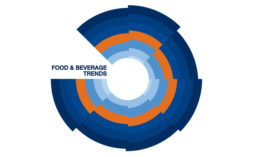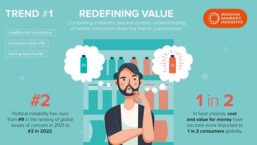Home » Keywords: » inflation
Items Tagged with 'inflation'
ARTICLES
Exploring key innovations and shifts driving consumer preferences and industry growth
Read More
Food and Beverage Market Trends Study, 2025 Outlook
New Circana report provides a comprehensive update on the 2024 performance in the global retail food and beverage industry
December 23, 2024
Circana Research Reveals 86% of Eating Occasions Sourced from Home Over Past Year
Despite easing inflation, ongoing economic challenges drive shifts in consumers’ eating patterns both in and away from home
September 6, 2024
How Shoppers Control Grocery Spending
FMI Research suggests that consumers seek deals and shop around to address inflation-related impacts on food prices
August 30, 2024
The Food Industry Increases Strategic Investments While Tackling Financial Challenges
Improvements in transportation capacity, supply chain efficiency, and employee recruitment, balance inflationary pressures, credit card fees, rising theft, and regulatory burdens impact profitability
July 4, 2024
Sustainable Products Hold 18.5% of CPG Market Share
Data shows an increase of 1.2 percentage points since previous year, finds research from NYU Stern Center for Sustainable Business in partnership with Circana
June 12, 2024
At-Home Food Spend Remains Strong, Despite 13% Increase in Inflation
New IRI report reveals food and beverage dollar sales will moderate in 2023, but will remain higher than the historical baseline, even as volume sales decline
March 22, 2023
Trend Predictions Provide New Insights to Consumer Thinking
Brands need to be flexible in action and open in spirit to connect with consumers, while also taking full advantage of rapidly emerging technological opportunities
December 26, 2022
The Adaptive American Diet: Adusting to Pandemic Parameters, Higher Food Costs
New research suggests six macro trends currently shaping food and beverage consumption behaviors
November 2, 2022
One in Five Americans Struggle to Cover Day-to-Day Expenses as Inflation Soars
Mintel research shows that the most common consumer response to dealing with inflation is cutting back on nonessential purchases, followed by dining out less often
October 19, 2022
Unlock the Future of Food and Beverage Innovation
Are you a leader in research & development? Stay ahead of the curve with Prepared Foods, the premier source of information and insights for today's trend leaders and taste-makers in food and beverage manufacturing.
JOIN TODAYCopyright ©2025. All Rights Reserved BNP Media.
Design, CMS, Hosting & Web Development :: ePublishing








